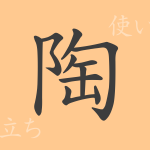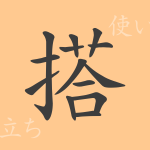In Japanese culture, the ‘tower’ transcends mere architecture. It engraves history, embodies culture, and deeply roots in people’s hearts, shining uniquely among common Japanese Kanji. This article delves deep into the character ‘塔 (とう)’, exploring its origins, meanings, usages, and even phrases and idioms involving towers, uncovering all its facets.
Origins of ‘塔 (とう)’
The etymology of ‘塔’ traces back to the ancient Indian term ‘stūpa’, referring to a structure housing sacred Buddhist relics, originally shaped like a hemispherical mound of earth or stone. As Buddhism spread to China, the Kanji ‘塔’ was created and subsequently introduced to Japan. Over time, ‘塔’ has evolved beyond its religious connotations to denote various types of tall buildings and structures.
Meaning and Usage of ‘塔 (とう)’
In modern Japanese, ‘塔’ generally refers to any tall structure, especially those with historical or religious significance, often used for monumental buildings. Metaphorically, it is also employed to depict heights of ambition or ideals that people strive for.
Readings, Stroke Count, and Radical of ‘塔 (とう)’
The Kanji ‘塔’ reflects its rich form and meanings in its pronunciation and structure.
- Reading: On’yomi ‘トウ’, no specific Kun’yomi
- Stroke Count: 12
- Radical: Belongs to the ‘土 (つちへん)’ radical, associated with earth
Phrases, Idioms, and Proverbs Involving ‘塔 (とう)’
The character ‘塔’ appears in numerous idioms and phrases, drawing from its imagery and symbolic meanings. For instance, ‘五重塔 (ごじゅうのとう)’ refers to a multi-tiered tower, symbolizing traditional Japanese architectural elegance. The phrase ‘象牙の塔に篭る (ぞうげのとうにこもる)’ translates to secluding oneself in an ivory tower, often used critically to describe detachment from reality.
Conclusion on ‘塔 (とう)’
From its origins to the present, ‘塔’ has been embedded in diverse forms within our culture. From a religious symbol to a metaphor in arts and literature, and as a common figure of speech in everyday conversation, its presence is broad. Understanding the history and meanings packed into this single character allows us to appreciate the depth of the Japanese language and the richness of its cultural backdrop.

























